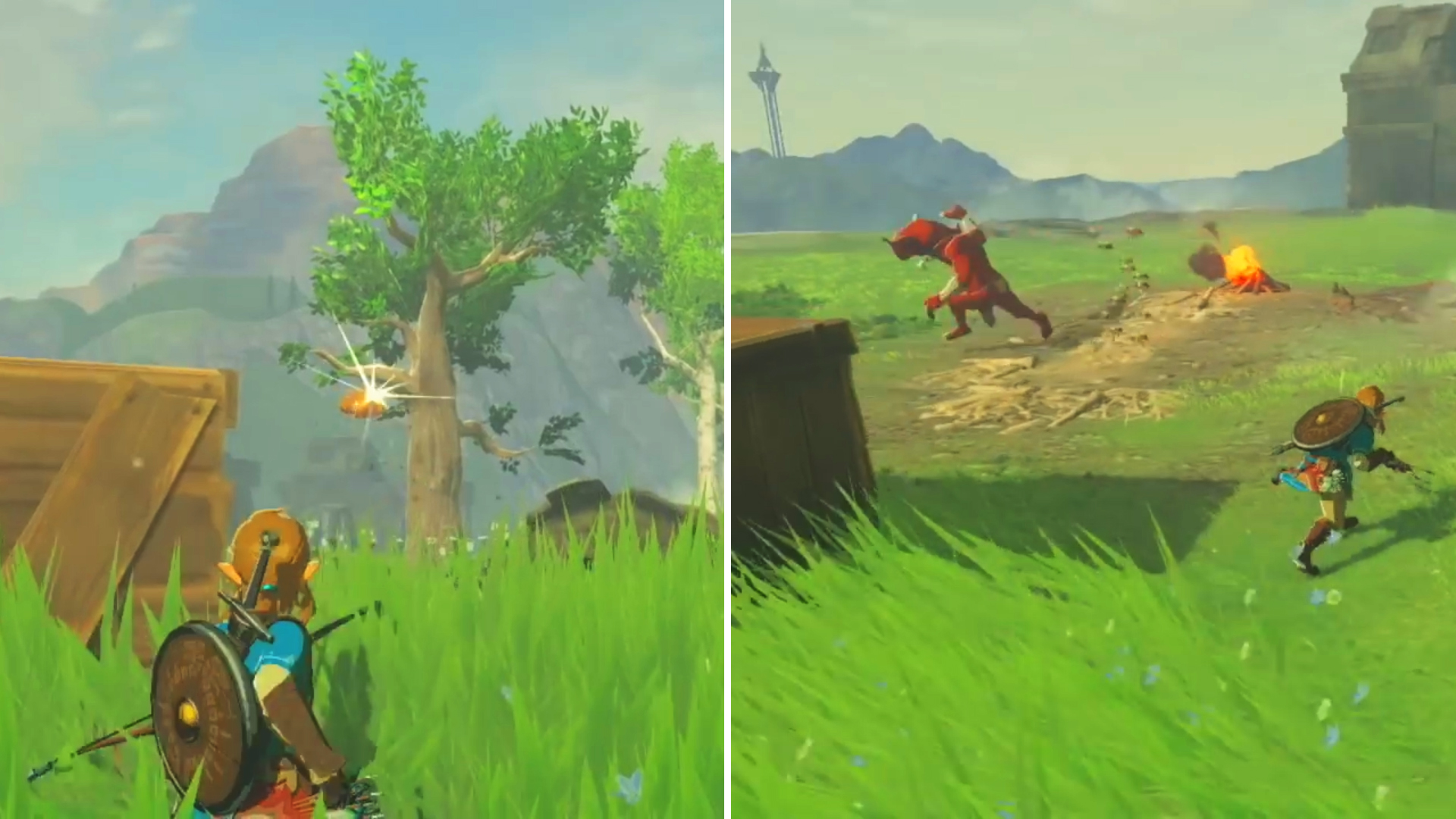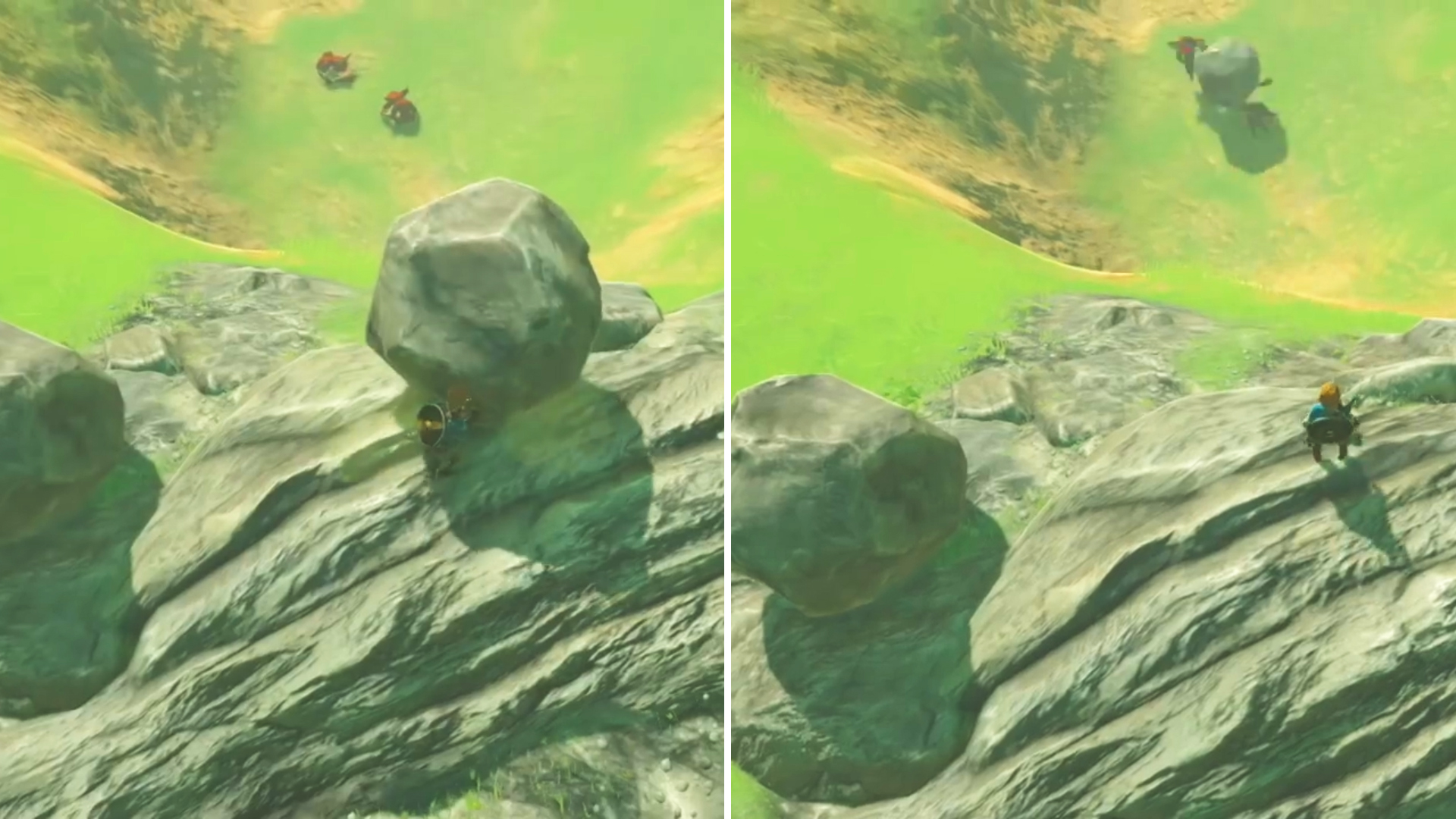Breath of the Wild May Not Modernize the Formula as Gamers Long Hoped
The Legend of Zelda: Breath of the Wild aims to finally bring contemporary game design elements to the aged franchise. It will have crafting, an expansive free-roam open world, a complex physics engine, and much more. However, based on what Nintendo showed-off of the game in their E3 event, there’s reason to worry the developers don’t know how to make a modern game this large.
Nintendo has been slow to respond to the outcry from fans wanting to experience something new or different. The “Zelda formula” was established 25 years ago with A Link to the Past and has changed very little since. Each game is in essence a very structured series of puzzles that must be completed in order and in a specific way. It’s a rigid system that isn’t found as often today. Ever since the explosion of Minecraft in 2010, an alternative way of playing and designing dominated the hearts and minds of game developers: emergent gameplay.
In a way, the difference between traditional design and emergent design is the same as the difference between finding “the solution to a puzzle” and “a solution to a problem.”
In oversimplified terms, emergent gameplay is often unintended game design that emerged directly from the rules of the game (hence “emergent”), rather than being explicitly designed for a specific purpose. If there’s a wooden door, and you need a door key to pass through, it’s traditional design. If you couldn’t find the key and you wonder, “that door is wooden… what if I try to burn this door down with my torch,” and it works, then it’s emergent game design. The sense of satisfaction players feel from trying something creative and it actually working, is unmatched. In a way, the difference between traditional design and emergent design is the same as the difference between finding “the solution to a puzzle” and “a solution to a problem.”
Modern games have gotten more and more complex. The larger and more interactive worlds come with a higher development cost, so contemporary designers have found inventive ways of letting the games design themselves. Tricks like procedural generation let Borderlands have millions of guns and will let the tiny studio behind No Man’s Sky make trillions of unique planets. Universal physics engines allowed Avalanche Studios to fill their massive islands in Just Cause with destructible structures, all without having to hand-animate any of them. Object-driven interactivity let 5th Cell cram every noun in the English dictionary into Scribblenauts as interactive objects, each with its own rules and behaviors. All in all, there’s more of a “set it and forget it” mantra in the current developer community. Emergent gameplay opportunities naturally surface from these less deliberate game design methods.
And this is where The Legend of Zelda: A Breath of the Wild should make us worry. Let’s take a look at shots from the debut trailer:
 Nintendo explicitly sanctioned that bee hive for use on this Bokoblin.
Nintendo explicitly sanctioned that bee hive for use on this Bokoblin.
These successive screenshots show Link shoot a bee hive, and then the angry bees attack the Bokoblin resting right next to the tree the beehive was hanging from. In the next shots, you see a couple of boulders precariously perched above a pair of resting enemies; Link pushes one of them down and, just as planned, the boulder takes out the enemies.
 Director Eiji Aonuma made sure that if there is a boulder, then there is something it is for.
Director Eiji Aonuma made sure that if there is a boulder, then there is something it is for.
Sure, you could fight the Bokoblin’s directly, mano a mano, but there’s also clearly a “right” way to kill them each time. The developers created tools that should serve emergent gameplay, but they are just using them to make classic puzzles all over again. It’s like taking the batteries out of an electric razor and trying to shave by scraping the blades across your chin.
The preview event was filled with examples like those. There are enemies holed up in a cave shaped like a skull, but through one of the “eye” holes of the cave you can see a dangling lantern. If you shoot it down, it lands on explosive barrels and kills all the enemies. You can chop down any tree now, but only the tall ones are big enough to serve as bridges when fallen. So what trees do you see next to a chasm? The tall ones, of course. And with an axe nearby, no less. On the other side of the chasm is a cliff you’re clearly meant to climb. You can tell because there’s one vertical path that conveniently has resting spots to regain stamina and keep climbing. Let’s not kid ourselves; these are just standard puzzles pretending to be emergent gameplay.
The developers created tools that should serve emergent gameplay, but they are just using them to make classic puzzles all over again.
Let me step back for a moment to point out that the Breath of the Wild E3 demo was just that: a demo. It’s an early, stripped-down slice of the opening tutorial of a game that is still in development. In all likelihood, these puzzles are there just to quickly explain the new mechanics to E3 attendees. Maybe the game becomes less structured past the tutorial zone in the demo.
Or maybe not.
Director Eiji Aonuma is a conventional game designer after all. He’s only ever made one type of Zelda game: traditional. Despite claiming Skyword Sword would be a departure from the formula, the game was arguably just a slight remix. “There have been very few ‘internal’ changes to the Zelda formula in recent games. This time, we started development with the view that we needed to rectify this situation on Skyward Sword,” Aonuma said at the time. While more intrepid designers from his era have embraced emergent gameplay design, as seen with Hideo Kojima’s MGS V: The Phantom Pain, Eiji Aonuma has traditional design and the Zelda formula ingrained into him. Frankly, I’d be surprised if he looked at a Rorschach inkblot and didn’t see a Zelda puzzle in it.
GameSpot’s Danny O’Dwyer shows us an example of emergent gameplay.
Nintendo employed the help of Monolith Soft, the talented developers behind the Xenoblade Chronicles franchise, to help with Breath of the Wild. Yet as accomplished as they are, their large open worlds have never really been interactive. Yes, they let you go anywhere and do things mostly out of order, but the things you do can only be done in the one way. The round peg goes in the round hole and that’s it.
Does The Legend of Zelda need emergent gameplay? No, definitely not. Even if it doesn’t nail that aspect, this game could still be a masterpiece. However, the game is selling itself as a modern, almost survival sandbox game in the style of Ark: Survival Evolved or Far Cry Primal. All the superficial elements are there: foraging, hunting, crafting, equipment durability, etc. But where modern games of that style confront the player with broad goals and allow for a variety of inventive solutions, Breath of the Wild appears to explicitly ask players to find the one correct solution.
The Legend of Zelda: Breath of the Wild’s world is presumably too large for the developers to micromanage the placement of every single boulder in the game. Or so you’d think, wouldn’t you? But from the looks of it, that’s exactly what Aonuma is trying to do. He’s making Rube Goldberg Machines out of the object/physics engine. And I fear that as a result of this, the world will be more empty than it would have been if they took the modern, more hands-off approach to sandbox design. If the game is mostly comprised of small pockets of intricately planned play-zones scattered across huge tracts of empty, boring landscape between them, then I’ll know to blame the developers’ lack of understanding for modern game design.
Am I just being a worry wart again?
Did you know you can report news for us too? Anyone can report the news, or post a review on gamelust.com, AND have a chance to become featured on our homepage! All you need to do is log in or register with us and add your voice today!










